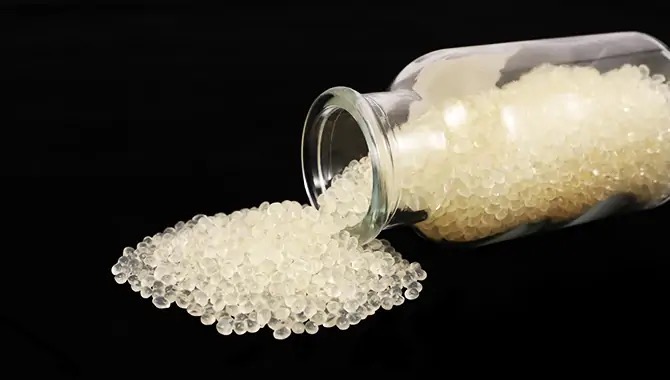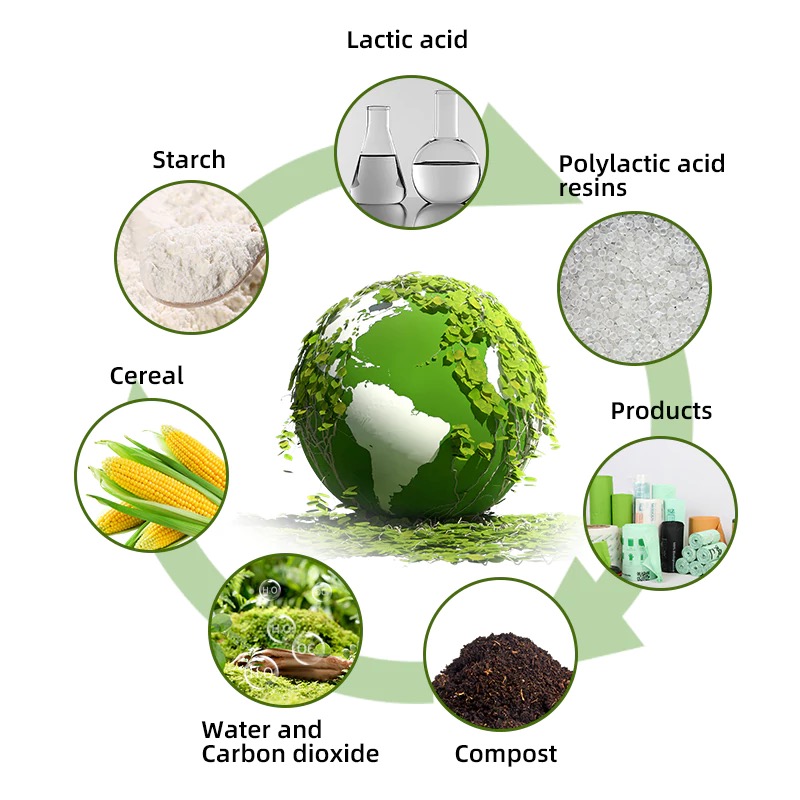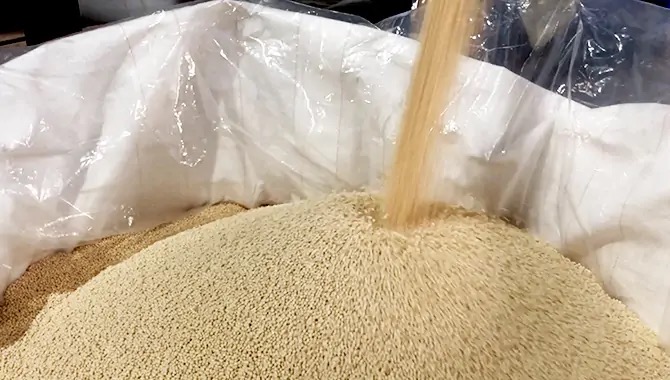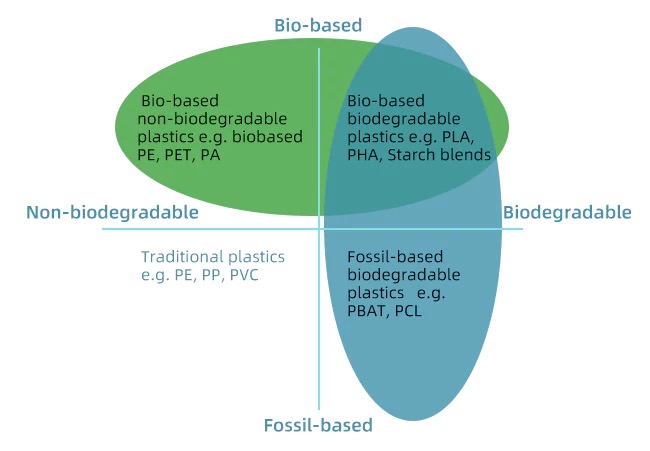As sustainable packaging becomes important for businesses and consumers, two materials stand out in compostable bags: PLA and PBAT. But what exactly are these materials, and which one is better for your compostable bags?
🧾 Quick Answer: Is PLA or PBAT Better for Compostable Bags?
PBAT benefits flexible bags that people can compost at home. PLA is better for rigid, plant-based options used in industrial composting. For most compostable packaging, a PLA+PBAT blend offers the best balance of durability, eco-friendliness, and breakdown performance.

🧪 What Is PLA?
PLA (Polylactic Acid) is a biodegradable plastic made from renewable plant-based materials like corn or sugarcane. Many people widely use it for compostable packaging, utensils, and films.
- Made from: Renewable plant starches
- Biodegradability: Compostable in industrial composting facilities (not at home)
- Common Uses: Food containers, transparent films, disposable cutlery
🌱 What Is PBAT?
PBAT (Polybutylene Adipate Terephthalate) is a petroleum-based, biodegradable plastic that breaks down quickly under home composting conditions.
- Made from: Fossil-based ingredients, but designed to be biodegradable
- Biodegradability: Fully compostable at home and in industrial facilities
- Common Uses: Compostable trash bags, mailers, flexible pouches
⚖️ PLA vs PBAT: Comparison Table
| Feature | PLA | PBAT |
|---|---|---|
| Source | Plant-based (e.g. corn) | Petroleum-based |
| Compostable at home? | ❌ No | ✅ Yes |
| Compostable industrially? | ✅ Yes | ✅ Yes |
| Flexibility | Moderate | High |
| Strength & Durability | Good for rigid packaging | Better for flexible bags |
| Cost | Slightly lower | Slightly higher |

🌍 Why Most Compostable Bags Use a Blend of PLA + PBAT
Many compostable bag manufacturers combine PLA and PBAT to achieve the best of both worlds:
- PLA provides structure and is derived from plants.
- PBAT adds flexibility and enables home compostability.
This combination is perfect for:
- Compostable drawstring trash bags
- Compostable courier mailers
- Personal care and clothing packaging
At hemcbags.com, We use a blend of PLA and PBAT for our certified compostable bags. This blend ensures good performance, softness, and complete breakdown after use.

🔍 What Businesses Should Consider When Choosing
When selecting the right compostable material, consider:
- End-of-life environment: Will users compost the bags at home or through a facility?
- Product type: Rigid or flexible packaging?
- Certifications: Look for OK Compost HOME, BPI, and EN 13432 certifications.
- Custom branding needs: Both materials are printable, but PBAT blends offer smoother surfaces for inks.
🙋 Frequently Asked Questions
Q1: Can PLA bags decompose at home?
No. PLA usually requires industrial composting conditions to break down effectively.
Q2: Is PBAT fully compostable?
Yes. PBAT is biodegradable and often used in home-compostable products when blended with starch or PLA.
Q3: What’s the best material for compostable courier bags?
A PLA+PBAT blend is best—it provides flexibility, printability, and reliable composting performance.
Q4: Are PLA and PBAT bags safe for food packaging?
Yes, both materials are food-safe if manufactured correctly and certified.
🏁 Final Thoughts

There’s no one-size-fits-all answer when it comes to compostable packaging.
- Choose PLA if your focus is on plant-based materials and rigid packaging for industrial composting.
- Choose PBAT or a PLA+PBAT blend if you need soft, durable bags that can compost at home.
Many eco-friendly businesses today use PLA+PBAT compostable bags. These bags offer a good balance of sustainability, performance, and brand appeal.
Need customized, certified compostable bags in bulk? Explore your options at hemcbags.com—your partner in sustainable packaging.

